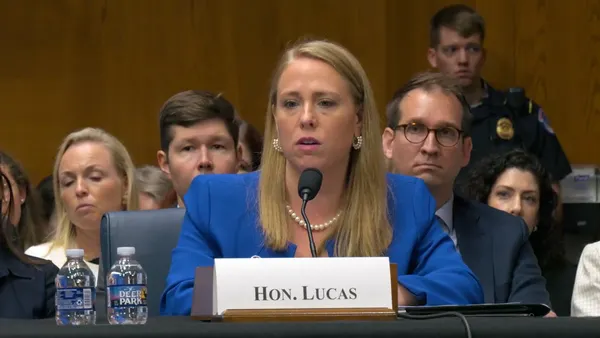Dive Brief:
- Chili’s restaurant owner Brinker International should not have been granted summary judgment on a general manager’s Age Discrimination in Employment Act lawsuit because the evidence it presented to justify his termination couldn’t be authenticated and wasn’t admissible, the 6th Circuit U.S. Court of Appeals held June 17.
- Per court records in Kean v. Brinker International, Inc., the manager ran a Chili’s in the Nashville, Tennessee, area. When he was terminated at 59, he was one of the oldest general managers in the region and was replaced by an allegedly inexperienced 33-year-old, according to the record.
- Brinker said it fired the worker for creating a toxic culture and not turning a good profit, the 6th Circuit noted. To support its position, Brinker submitted a Team Manager Relations report, a compilation of notes and emails apparently put together after the termination decision was made and after the GM complained of age discrimination to HR, court records indicated.
Dive Insight:
A federal district court relied on the TMR report to grant pretrial judgment to Brinker, the 6th Circuit pointed out.
In a universal lesson on document retention, the 6th Circuit said this was an abuse of discretion and reversed the ruling. Brinker did not respond to a request for a comment.
The TMR report could not be used to justify the GM’s termination because it couldn’t be authenticated, and Brinker failed to retain original documents — including performance reviews and purported complaints — relating to the GM’s employment and why he was fired, the 6th Circuit explained.
An HR employee functioning as the TMR specialist appeared to have drafted the report, apparently from her notes and post-termination emails circulated among her and the other team members, the court said.
But the TMR specialist testified she had no recollection of writing the report or what it discussed, according to the record.
Notably, compounding the destruction of evidence, none of the involved management team had “any independent recollection of either their role in terminating [the GM] or why the decision to terminate was made,” the appeals panel said.
In contrast, the GM presented admissible evidence contradicting Brinker and raising trial questions over whether he was fired because it wanted a more youthful work culture, the 6th Circuit held.
Specifically, when he was terminated, the GM’s key performance indicator report and employee engagement scores were excellent, the court pointed out. The KPI report measured his restaurant’s financial success by looking at employee turnover, guest experience and cost.
Regarding alleged ageism, both an earlier supervisor and the GM’s assistant manager noted a trend of more senior employees leaving while younger employees were being promoted and hired into management, the 6th Circuit observed.
For employers, the case serves as a critical reminder: Timely and properly prepared documentation can make or break a lawsuit.
In 2020, for example, the 6th Circuit ruled that a furniture company proved it fired an employee for poor performance, not because of his race, based on written warnings it gave the employee detailing his performance problems and how he could improve.
Also, while incomplete or contradictory documentation may prolong litigation, employers face heavy penalties for deliberately destroying documents after litigation has begun.
In the Chili’s case, the district court found Brinker’s destruction of pre-termination documents was not intentional but rather “grossly negligent.”
The 6th Circuit left that finding in tact, but instructed the district court to consider imposing more severe sanctions than just fees and costs.
Brinker likely failed to preserve relevant documents initially because it didn’t have a consistent records-retention policy in place, the appeals panel suggested. But after the GM was fired and said he was planning to hire a lawyer, Brinker waited five months to place a litigation hold on documents going forward, the 6th Circuit said.














